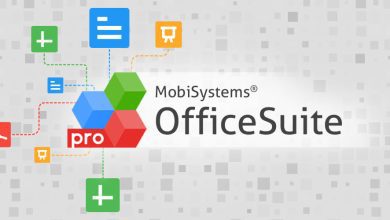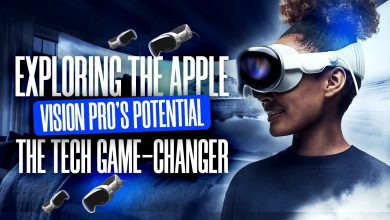Artificial intelligence spurs 62% of carriers to cut staff – survey – Bank Vacancy
“When we look to computers or we look to technology to make an organisation more profitable and more efficient … some of these organisations have employed, in some cases, mountains of people to be able to do some of this work,” said Jeff DeVerter, chief technology evangelist, Rackspace Technology.
“Some of the low-level analyst work that used to be done in large spreadsheets, that used to be done in some specific tooling for the industry, maybe we’re finding now that AI and ML is actually able to do the work of a lot of those folks who were effectively manually doing work before.”
While DeVerter said he did not see the senior underwriter of the future being replaced by AI, he did predict an end to “armies of underwriters”.
Artificial intelligence (AI) refers to the ability of machines or computer systems to perform tasks that typically require human intelligence, such as understanding natural language, recognizing visual patterns, learning from experience, and making decisions. AI technology is based on the principles of machine learning, neural networks, and deep learning, which allow machines to learn from data and improve their performance over time.
There are various types of AI, including narrow or weak AI, which is designed to perform specific tasks within a limited domain, and general or strong AI, which is capable of performing a wide range of cognitive tasks that typically require human-like intelligence. Examples of AI applications include speech recognition, image recognition, natural language processing, recommendation systems, autonomous vehicles, and robotics.
AI technology has the potential to transform many industries and areas of society, from healthcare and education to finance and transportation. However, there are also concerns about the ethical and social implications of AI, including issues related to privacy, bias, transparency, accountability, and job displacement. As AI technology continues to evolve and become more pervasive, it is essential to address these concerns and ensure that AI is developed and used in a responsible and beneficial way.
“Should you worry? I’d redirect that and say, you have indispensable industry knowledge, but the job you have today is probably going to change, and so you’ve got to change with it,” DeVerter said.
“Detroit is a great example, in the auto industry you had companies make some changes as robotics came in, and had individuals changed their skilling, they would have been a lot better off, but you just can’t keep doing things the way we’ve always done them.
“The industry knowledge is indispensable, that’s needed to train models, it’s needed to move forward and needed to take those models and then figure out how we can monetise them even better in the future.”
The “smart individuals are reading the tea leaves and figuring out what skills they need to adopt”, DeVerter said.
Insurers face an AI talent challenge
Some insurers may be looking to reduce headcount as a result of AI and technology gains, but a talent and skill shortage in the area was seen as the “greatest challenge” where it came to adoption so far, cited by 67% of insurer respondents. Nevertheless, 90% of insurers said they had grown their AI and ML workforce in the past 12 months.
The businesses that are ahead have been looking at the technology for at least five years, DeVerter said.
Other challenges included a lack of new business use cases (58%), algorithm or model failure (52%), and lack of technology infrastructure (52%).
Eighty one per cent (81%) of insurer respondents said that AI and ML now led their IT and business strategy, compared to 63% for cybersecurity and 58% for cloud.
What benefits are insurers seeing from AI?
More than half (52%) of insurers said they had realised “substantial benefits” from AI/ML already, according to the Rackspace survey, with another 23% saying they’d seen modest benefits. Meanwhile, 25% said it was too early to tell. Insurers listed benefits as follows:
• 81% risk reduction, increased understanding of business/customers
• 79% increased sales
• 77% personalised marketing
• 75% increased productivity
• 73% increased revenue streams, operation cost reduction
• 69% improved customer satisfaction
• 67% faster time to profitability, reduced cost of new product development, ability to hire/recruit new talent
• 65% increased innovation
Insurer IT decision makers still face AI/ML pushback from within the business
Despite reported benefits, more than half (56%) of insurance IT decision makers said they had received some form of “pushback or scrutiny” over the penetration of AI in their business.
Reluctance could stem from a “collision of the business and IT”, DeVerter said. “IT get their feathers ruffled a little bit when business comes and says, here’s this new technology that you need to implement based on this other data and storage, do we have enough?”
On the flipside, an IT department may hit hurdles when pitching use of the technology to an organisation that could view them as “server jockeys”, DeVerter said.
Blockchain, IoT, and cloud technology were said to be more important than AI and ML in Rackspace’s survey two years ago, but these have since slid down insurers’ lists of priorities.
Do insurers trust AI?
-
- Over a third (38%) said they strongly trust AI and ML results, with more (42%) only slightly trusting the results.
-
- About as many (38%) strongly versus 33% slightly though there were enough checks and balances in place to avoid any negative consequences of AI/ML
-
- 44% strongly vs. 35% slightly thought there was sufficient governance in place to safeguard against AI and ML misuse
- artificial intelligence,artificial intelligence documentary,artificial intelligence robot,what is artificial intelligence,artificial intelligence tutorial,artificial intelligence for beginners,artificial intelligence says,types of artificial intelligence,artificial intelligence edureka,artificial intelligence reveals,artificial intelligence podcast,google’s artificial intelligence,artificial intelligence uprising,artificial intelligence explained,intelligence
AI and ML a “systemic wave” across sectors
Insurers’ perceptions and use of AI and ML may be shifting, but the industry is not unique in this regard.
Adoption of the technology was described as a “systemic wave” by DeVerter.
“If you look at the benefits to these projects, it’s not like, ‘hey, we’re just trying to reduce costs and move to the cloud, hey, we’re just trying to be more cautious around security or risk’ – but if you look at where this is having an impact, it’s having an impact in risk reduction across sales, marketing, productivity, revenue streams,” DeVerter said.
“It’s not just impacting every market segment in every industry and every country, but every aspect of the companies as well, so it’s a pretty exciting place to be right now.”
Got something to say about this article? Let us know in the comments.



